Origins of Marxism-Leninism-Maoism
Introduction to Marxism-Leninism-Maoism

Marxism-Leninism-Maoism represents a confluence of ideas that have catalyzed some of the most significant movements in modern history. This political philosophy builds on the class analysis of Karl Marx, the revolutionary tactics of Vladimir Lenin, and the strategic insights of Mao Zedong.
Introduction to Marxism-Leninism-Maoism
Marxism-Leninism-Maoism is an ideology synthesizing Marx's analyzation of capitalistic societies, Lenin's theories on the revolutionary vanguard and proletarian state, and Mao's contributions, particularly in guerrilla warfare and peasant mobilization. The tripartite theory, though formally structured post-Mao, draws foundational principles from each leader’s intellectual legacy. It addresses the dynamics of power, economics, and class struggle, aimed at dismantling capitalist structures and implementing a communist society. Echoing Marx, it retains the commitment to a classless system where production serves communal interests.
Significance: The significance of Marxism-Leninism-Maoism lies in its detailed blueprint for revolution, adapted to varying global contexts beyond its theoretical origins. As such, adherents espouse an ongoing dialectical process, seizing political and cultural revolution as continual rather than static. This amalgamation posits that a perpetual state of revolution is crucial to prevent the atrophy of socialist aims into bureaucratic or capitalistic degradation.
Scope and Application: Its scope transcends the Russian and Chinese revolutions, influencing numerous leftist movements worldwide; it prescribes not only the path to revolution but also methodologies for sustaining a socialist state. It is crucial, therefore, to view Marxism-Leninism-Maoism not as a relic of the past but as a living doctrine, malleable and relevant to contemporary society.
Overview of Marxism-Leninism-Maoism

Marxism-Leninism-Maoism (MLM) emerged as a beacon of revolutionary thought, building upon the heritage of class struggle and societal transformation as postulated by Karl Marx. By intertwining Lenin's theoretical insights on the proletarian vanguard and the dictatorship of the proletariat, MLM advocates positioned themselves as trailblazers in the quest for class emancipation. In addition, Mao Zedong's pragmatic approach to revolution in a semi-feudal, semi-colonial context further enriched MLM by emphasizing the roles of peasantry and protracted people's war.
This triadic ideological synthesis contours a comprehensive worldview and strategy for overthrowing imperialist structures and capital hegemony. Unlike its predecessors, which were largely centered on urban industrial working classes, MLM adapts to diverse sociopolitical landscapes, making the ideology particularly appealing to revolutionary movements in the Global South. MLM's commitment to continuous revolution seeks to avert the ossification of revolutionary gains and guard against the resurgence of capitalistic or bureaucratic tendencies within a socialist state.
Staunch followers of MLM perceive this doctrine as an advanced stage of Marxism, one that has distilled and improved upon its foundational philosophies. By encapsulating a more global and adaptable form of revolutionary theory, MLM stands as a testament to its integral theorists—Marx, Lenin, and Mao—and serves as an intellectual inheritance that continues to incite and inform global revolutionary movements in the contemporary era.
Historical Context and Development

The roots of Marxism-Leninism-Maoism (MLM) lie in the tumultuous social upheavals of the 20th century. This ideology was born out of the realization that a comprehensive approach was required to address the complexities of global class struggles. Marxism, with its analysis of class conflict and capitalism, provided the foundational principles for this revolutionary thought. Leninism expanded upon these ideas, focusing on the role of a vanguard party to lead the proletarian revolution. Maoism adapted these theories to the realities of semi-fecolonial countries, highlighting the need for a prolonged and agrarian-based revolutionary strategy.
The emergence of MLM was marked by the confluence of these historical antecedents, synthesizing the insights of its namesake theorists to form a more global and applicable revolutionary doctrine. The Shining Path's formalization of MLM in 1982 represented a crystallization of this synthesis, affirming its status as a higher stage of Marxism that believed in adapting to varying sociopolitical contexts. These developments underscore the evolution of a revolutionary framework that seeks to continually advance class struggle against imperialist forces and capitalist exploitation, reflecting the dynamic and changing circumstances of global resistance movements.
Karl Marx and the Foundations of Marxist Theory
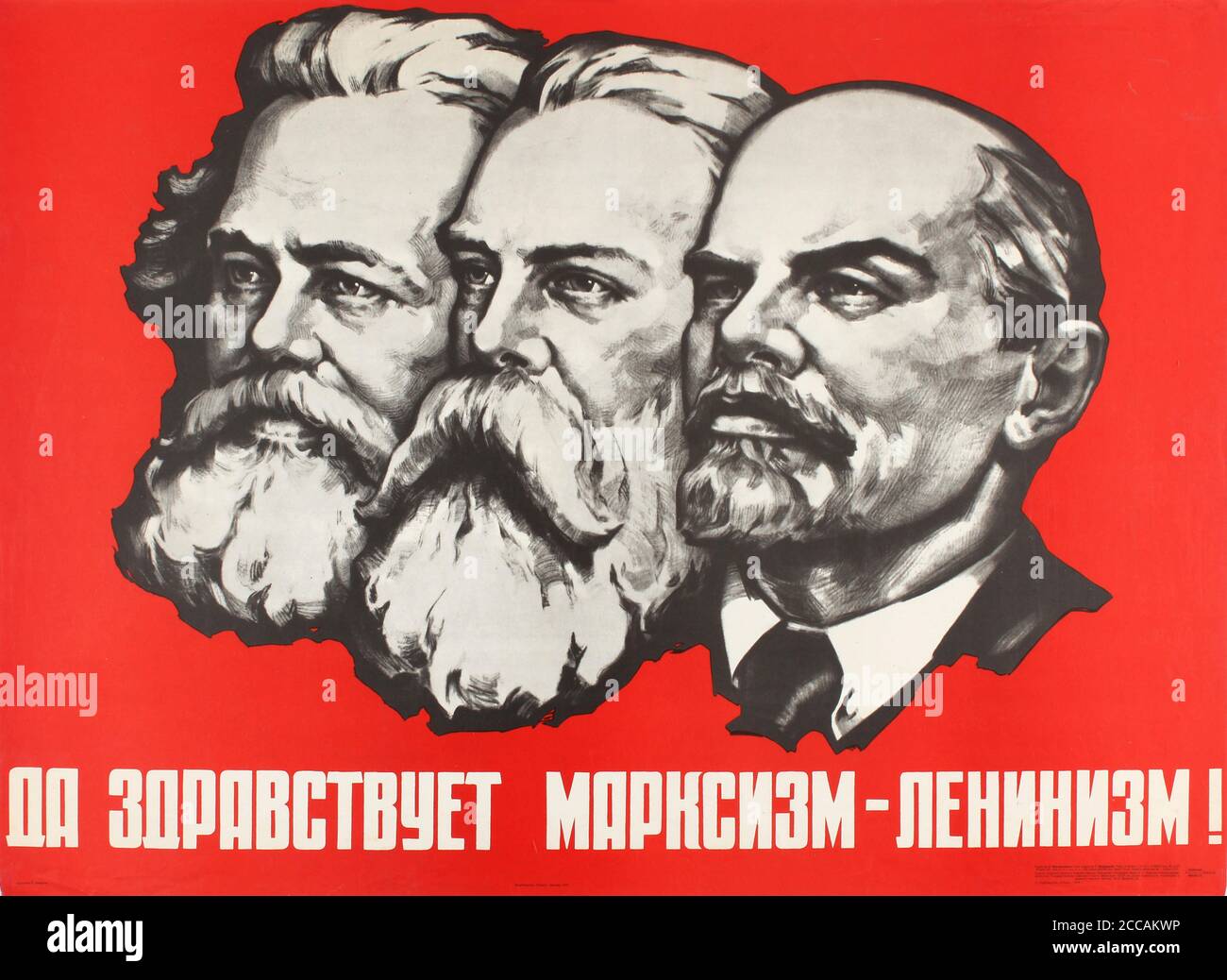
Karl Marx, a philosopher and economist, revolutionized the understanding of the socio-economic landscape with his incisive theories. He introduced the concept of historical materialism, asserting that material conditions and economic activities shape societal structures and changes. His critique of capitalism remains pivotal, outlining the theory of surplus value and the inherent exploitation within capitalist systems. Marx's vision of a proletariat uprising culminated in the idea of a classless society, aiming to eradicate the disparities born from bourgeoisie control. These foundational ideas influenced generations of thinkers, providing a lens through which to analyze and challenge prevailing economic dynamics. The influence of Marx's groundbreaking theories extended beyond mere critique, inspiring movements that sought tangible transformations in pursuit of social justice and equality. His legacy continues to fuel debates on economic policies and the structure of societies across the world, evidencing the enduring relevance of his analytical framework.
Marx's Philosophy and Economic Theory
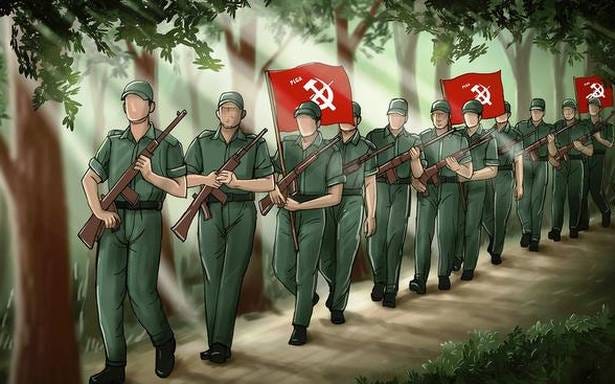
Karl Marx's analysis centered on the workings of a capitalist system, which he saw as fundamentally exploitative. He posited that the capital owners, or bourgeoisie, profit from the surplus value produced by workers, or the proletariat, leading to class conflict. According to Marx, this economic base underpins the political and societal superstructure, driving historical progression through class struggle. His theory of dialectical materialism holds that material conditions and economic relations determine the development of societal structures, rather than ideas or ideals. By dissecting the mechanics of capital accumulation and the labor theory of value, Marx aimed to reveal the unsustainable nature of capitalist societies and the inevitability of their evolution into socialist and eventually communist systems, characterized by collective ownership of the means of production. Marx's groundbreaking work laid the foundation for future theorists to expand upon his ideas and galvanized activists and workers to rally for profound socioeconomic transformations.
Marxist Concept of Class Struggle and Revolution
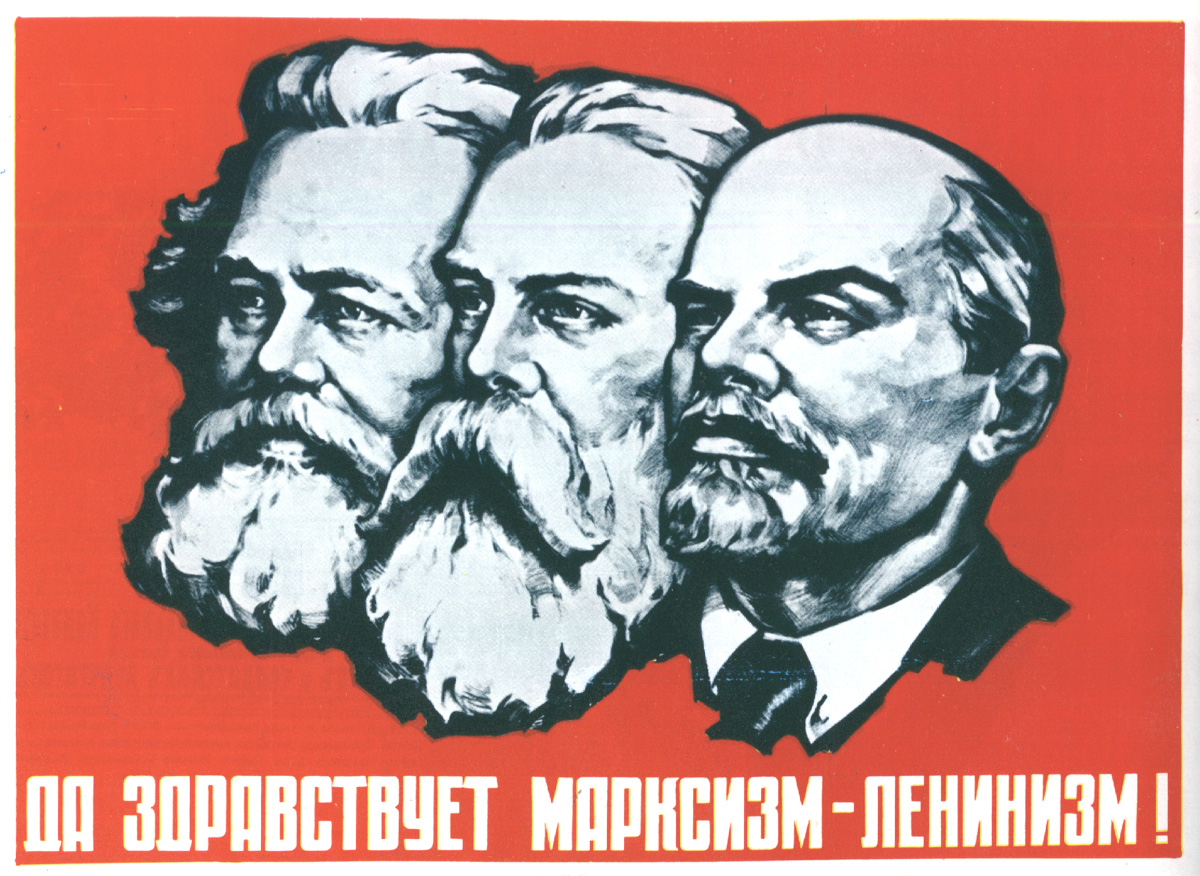
At the heart of Marxist theory is the notion that societal change occurs through class struggle and revolution. This conflict is driven by the proletariat's realization that their subjugation results from exploitation by the bourgeoisie, the capital-owning class. The proletariat, gaining class consciousness, mobilizes against the oppressive structures of capitalism to establish a classless society.
Marx envisioned this revolution as the inevitable overthrow of capitalist systems. A transitional socialist state would replace the bourgeois dictatorship, where the workers control the means of production. Eventually, this would lead to the withering away of the state into a classless, stateless communist society.
The steps toward achieving this revolutionary transformation include organizing the working class, raising awareness of their exploitation, and creating political movements that challenge the status quo. A pivotal aspect of Marx's strategy involves developing solidarity among the workers worldwide, advocating for an international revolution.
The catalyst for revolution, according to Marx, lies in the increasing misery and alienation experienced by the working class, coupled with economic crises inherent in capitalism. By uniting and forcefully responding to these conditions, the proletariat aims to dismantle capitalist society and build a new social order predicated on egalitarian principles and collective ownership.
Leninism: Revolution and the State
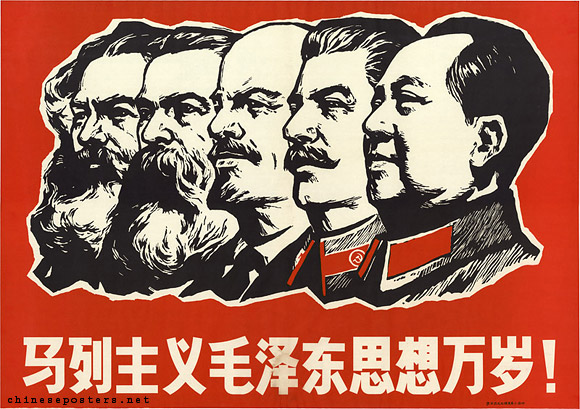
Leninism introduces the necessity of a vanguard party to lead the working class in revolution. This group of professional revolutionaries is equipped with Marxist theory and political savvy to guide the masses. Lenin's view was that without this leadership, the proletariat would not achieve class consciousness and, thereby, could not overthrow the capitalist system. His strategy emphasized disciplined organization and a clear understanding of the dynamics of power within the state apparatus.
Under Lenin, the state was seen as a tool of oppression that needed to be smashed and replaced with a proletarian state, which would act as a dictatorship of the proletariat. Once the working class had seized state power, the goal was to suppress the former ruling class and implement policies to transition towards a socialist and, eventually, communist society.
Lenin's contributions significantly influenced the political landscape of the 20th century, shaping the Soviet Union's foundation and impacting revolutionary strategies worldwide. His approach stressed the need for a well-coordinated party that can adapt to changing conditions and effectively resist counter-revolutionary forces. The disciplined centralism and commitment to revolution that Lenin advocated remain core tenets of Leninist philosophy to this day.
Vladimir Lenin and the Bolshevik Revolution

Vladimir Lenin emerged as a pivotal figure during the tumultuous period of the Bolshevik Revolution in 1917. A master tactician, Lenin capitalized on the widespread discontent within Russia to successfully orchestrate a revolutionary overthrow of the provisional government. This led to the establishment of a new regime based on socialist principles. The Bolshevik Party, under his leadership, championed the cause of the proletariat, promising peace, land, and bread.
A core tenet of Lenin's ideology was the suppression of the bourgeoisie by the proletariat, ultimately paving the way for a classless society. Lenin's government embarked on a series of radical reforms that included nationalizing industry and distributing land among the peasantry. He strategically withdrew Russia from World War I with the Treaty of Brest-Litovsk and moved to construct a socialist economy.
The Bolshevik Revolution signified a landmark moment, opening the floodgates for communist ideologies to spread on a global scale. Lenin's iron-willed leadership during this period has left an indelible mark on the annals of history, serving as a catalyst for numerous other 20th-century socialist movements. Despite the controversies and challenges that followed, Lenin's role in shaping the Soviet Union's early years cannot be overstated, as it navigated through civil war, foreign intervention, and internal consolidation into a centralised power.
Lenin's Contributions to Marxist Theory
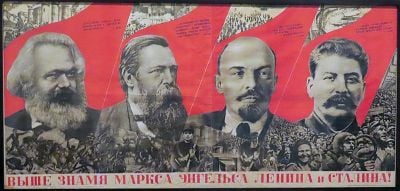
Lenin's imprint on Marxist theory is indelible, most notably through his concept of a vanguard party. He posited that a highly organized and disciplined political party was essential to lead the working class in overthrowing the bourgeoisie. His ideas also extended to the structure of a socialist state, advocating for a democratic centralism where decisions once made by the party are executed unanimously. This approach, he believed, would maintain unity in action while preserving democratic discussion. Lenin further developed the theory of imperialism as the highest stage of capitalism, detailing the complexities of global capital's influence.
Moreover, Lenin argued for the necessity of a temporary state apparatus to suppress resistance by the bourgeoisie, referred to as the dictatorship of the proletariat. This entity would serve to dismantle the existing class structure and pave the way for a communist society—a classless, stateless, and governmentless utopia. His strategic adaptations to Marxism ensured the relevance of socialist revolution even in less industrially developed societies, contrasting Marx's original concentration on advanced industrial nations. Lenin's theoretical innovations remain crucial to Marxist thought, having informed the successful revolution in Russia and influenced countless other movements worldwide.
Maoism: Chinese Revolution and Ideological Adaptation
The Chinese Revolution was a turning point in the nation's history, yielding profound changes not only within China but also sending ripples across the world. Riding on the back of the revolution, Mao Zedong emerged as a pivotal figure, leading the charge and adapting Marxist-Leninist doctrine into what is broadly recognized as Maoism. This was an ideological adaptation tailored to address the unique challenges posed by China's social and economic landscape.
Maoism emphasized the potential of the peasantry as a revolutionary force – a departure from classical Marxism, which centered primarily on the urban proletariat. Recognizing the rural masses as key to the revolution, Mao redirected the movement's energy to the countryside, igniting the agrarian population and using rural strongholds as a base to encircle and challenge urban centers.
Mao's military strategies were particularly novel during the Civil War period, prioritizing guerrilla warfare over conventional methods. His writings 'Strategic Issues in the Chinese Revolutionary War' serve as a testament to these adaptations. The ideological shift under Mao's guidance was imperative for building a sustained movement, which culminated in the establishment of the People's Republic of China in 1949.
The synthesis of these elements – an empowered peasantry, a focus on guerrilla warfare, and a distinctive approach to socialist construction – carved Maoism into a uniquely Chinese doctrine, albeit one with international influence. This approach underpinned China's development trajectory and inspired diverse anti-imperialist struggles globally.
Mao Zedong and the Chinese Communist Revolution
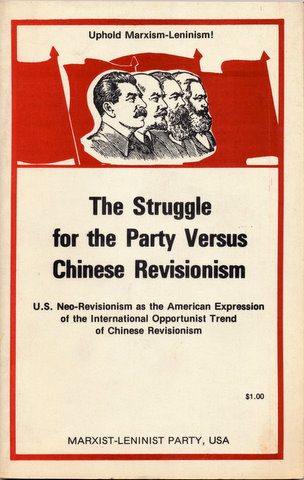
Mao Zedong, a revolutionary leader, steered China through a significant transformation fueled by the ideology that bears his name, Maoism. His vision was a China liberated from the yoke of imperialism, feudalism, and capitalism. In orchestrating this transformation, Mao placed great emphasis on the mobilization of the peasantry, which distinguished his strategy from the urban proletariat focus of orthodox Marxism.
During the Civil War period from 1940-1949, Mao honed his guerilla warfare tactics, proving effective against both Japanese occupiers and the rival Nationalist forces. His treatise, 'Strategic Issues in the Chinese Revolutionary War', became a manual for this type of insurgency warfare. Mao's adeptness at rural insurgency laid the groundwork for the Communist Party's eventual seizure of power in 1949.
Mao's tenure fundamentally restructured the Chinese society, with land reforms redistributing wealth and efforts to industrialize the nation challenging traditional practices. The Cultural Revolution, initiated in 1966, was a tumultuous attempt to eradicate capitalist and traditional elements from Chinese society, resulting in massive social, political, and cultural upheaval.
Through these relentless efforts, Mao Zedong Thought became enshrined in the Communist Party's doctrines, influencing a global wave of revolutionary movements. His legacy, a fusion of practical insurgency strategy and ideological fervor, reshaped not only the fabric of China but also the contours of global Marxism.
Mao's Ideological Contributions to Marxism-Leninism

Mao Zedong expanded upon the Marxist-Leninist foundations, adapting them to the Chinese context. His contributions emphasized the role of the peasantry in revolution, diverging from the focus on the urban proletariat. Recognizing China's largely agricultural society, Mao theorized that this majority could drive a successful revolution.
The Mass Line: A hallmark of Mao's thought, the Mass Line approach seeks to connect leaders with the populace, ensuring policies reflect the people's needs.
Protracted People's War: Unlike quick insurrections, Mao believed in a prolonged struggle, built on guerrilla warfare and rural support, to gradually wear down the enemy.
Cultural Revolution: Mao launched a movement to purge bourgeois and traditional elements, to reaffirm socialist ideals, though it turned controversial due to its excessive zeal.
Self-Reliance and Continuous Revolution: These principles were aimed at sustaining revolutionary fervor and developing an independent economy, resistant to foreign influence.
These ideological nuances distinguished Maoism and, by extension, reshaped Marxism-Leninism. They underscored a need to tailor revolutionary theory to specific national conditions. Mao's adaptability enabled the Communist Party of China to capture and maintain power, profoundly shaping the country's trajectory. His contributions have left an indelible mark on the global communist movement, shaping strategies and policies of parties across the world.
The Synthesis of Marxism-Leninism-Maoism

The Synthesis of Marxism-Leninism-Maoism signifies a convergence of ideological tenets, shaping a comprehensive worldview. In recognizing the dynamic evolution of societies, the synthesis draws on the proletarian struggle, the need for a vanguard party as elucidated by Lenin, and the agrarian focus and guerrilla warfare methods espoused by Mao.
Through this fusion, the ideology posits a revolutionary continuum where the vanguard party leads the working class, but nuances this leadership with Mao's emphasis on peasant participation and continuous revolution. Each element of this ideological trinity complements the others, aiming for a whole that is greater than the sum of its parts.
The blends of the three components enhance practical applications, adjusting to various socio-political and economic contexts while maintaining a commitment to overthrowing capitalist structures. This holistic approach signifies a significant theoretical advance in leftist thought, proposing a model for global revolutions that can adapt to region-specific challenges.
Central to this ideology is the belief in the power of the masses, and their potential for orchestrating social and political change through sustained collective action.
The strategic underpinnings of Marxism-Leninism-Maoism make it not merely a theoretical framework but also a guide for praxis, equipping movements with the philosophical, strategic, and tactical foundations necessary to navigate and confront the complexities of modern-day revolution.
Development of Marxism-Leninism-Maoism as a Unified Ideology

The convergence of Marxist ideologies into Marxism-Leninism-Maoism began to take shape in the backdrop of revolutionary movements across the globe. It entailed a rigorous analysis of class struggle dynamics and the evolving patterns of capitalist oppression. This synthesis, rooted in the historical experiences of twentieth-century political movements, represents an ideological lineage directly tied to practical struggle and adaptation.
In its formation, Marxism-Leninism-Maoism absorbed the core tenets of its predecessors: Marx's critique of capitalist society, Lenin's strategy of the vanguard party, and Mao's theory of protracted people's war and continuous revolution. The bridging of these ideas encapsulates a belief in a relentless drive for socialism, a journey through which the proletarian leadership must adapt to diverse and shifting political terrains.
Adaptive Strategy: Marxism-Leninism-Maoism underscores the necessity for revolutionaries to engage with and respond to the changing conditions of their specific contexts.
Mass Line: It champions the 'mass line' approach, where leaders listen to the grievances of the masses, interpret them through Marxist theory, and formulate revolutionary practice in accordance.
Cultural Revolution: Maoist influences introduced the concept of Cultural Revolution, a proactive process to combat bureaucratic stagnation and maintain the revolutionary fervor within society.
As a dynamic and continuously developing framework, Marxism-Leninism-Maoism seeks to apply a universal theory of revolutionary change, constantly refined through its application in real-world struggles. It stands as a testament to its proponents' commitment to a world free of class exploitation, rallying a global chorus for change wherein the masses are the heroes of their emancipatory narrative.
Key Principles and Practices of Marxism-Leninism-Maoism

Marxism-Leninism-Maoism consolidates into a coherent framework that champions the proletarian struggle for emancipation. Central to its core is the theory of dialectical materialism; the belief that change in society is prompted by the conflict between opposing forces, namely the class struggle. It predicates the necessity for the working class to seize state power through revolutionary means, fundamentally transforming the economic base, and by extension, the superstructure of society.
Integral to Marxism-Leninism-Maoism is Lenin's concept of the vanguard party. This elite group is tasked with leading the proletariat, elevating their class consciousness, and laying the groundwork for a dictatorship of the proletariat—a state led by workers in the interests of the working class. These theories were further nuanced by Mao's contributions; he emphasized a protracted rural struggle against the forces of feudalism and capitalism, diverging from the urban-centric revolutions of the past.
The strategy of protracted people's war proposes that revolutionaries conduct a lengthy, entrenched battle originating in the countryside and slowly encircling cities. Maoism also gifts the discourse the idea of the mass line, a method of leadership that seeks direction from the masses, synthesizes their inputs with Marxist science, and channels them into the political struggle.
Cultural Revolution is another significant tenet; a call for continual renewal within society and the party to prevent the ossification of ideology and to maintain the revolutionary spirit alive. Marxism-Leninism-Maoism maintains that through these principles, the revolutionary cause remains dynamic and responsive to the evolving reality of class antagonisms.
Influence and Legacy

Influence and legacy shape the world through actions taken and philosophies upheld. The class struggles and revolutions ignited across the globe have, in part, stemmed from the ideologies of Marxism, Leninism, and Maoism. With each movement and policy shift, the tapestry of societal progress is woven further, evidencing the powerful impact of these theories in practice.
Countries adopting these principles have seen vast shifts in power dynamics, often leading to the nationalization of resources and the promotion of social welfare. For instance, the land reforms in China redistributed land from the feudal landlords to the peasantry, symbolically eradicating centuries-old class distinctions.
Education and health care systems were often overhauled under such governments, seeking to embody the egalitarian spirit championed by these ideologies. The ripple effect of such transformative legacies is witnessed in contemporary policy debates that echo the need for equality and collective welfare.
Critiques, on the other hand, have highlighted the challenges and failures experienced in various nations, calling for analysis and introspection. The sustainability of revolutionary gains is scrutinized, and the conversation around the balance of power, corruption, and economic viability continues.
Despite the varied outcomes, the enduring legacy of these ideologies reminds us that societal structures are malleable, directly influenced by the actions and decisions we make, rooted in our collective history and aspirations.
Global Impact of Marxism-Leninism-Maoism
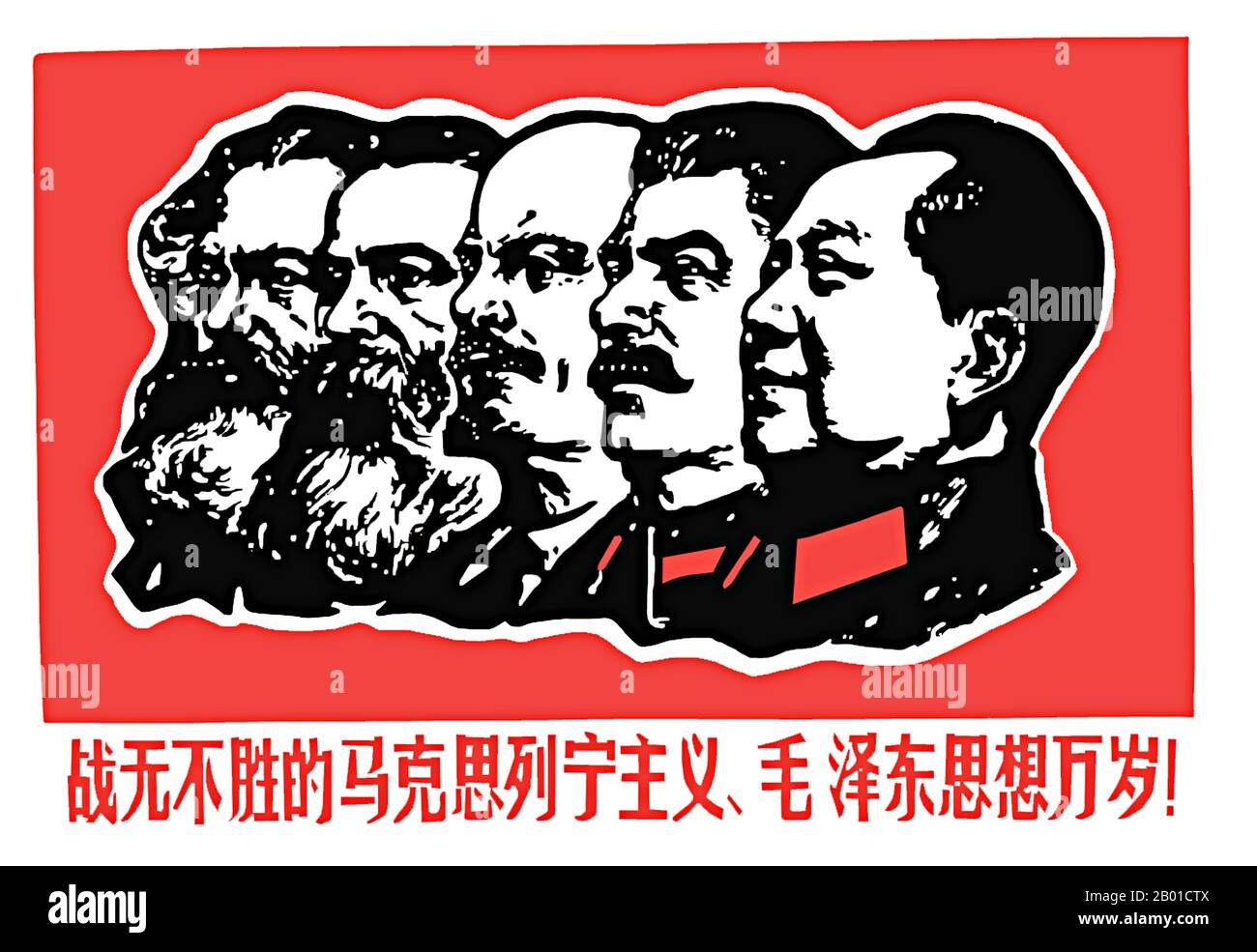
The potent fusion of Marxist-Leninist-Maoist principles has left an indelible mark on the global stage, reshaping societies and influencing a multitude of liberation movements. From Latin America to Southeast Asia, waves of revolutions have found inspiration in these doctrines, seeking to dismantle oppressive power structures and establish egalitarian societies.
Countries have attempted to embody the collective ethos of these ideologies, envisioning a world where wealth and resources are not concentrated within a small ruling class but are distributed for the benefit of all. This impact is profoundly felt in the enduring struggle for workers' rights, with trade unions across the globe drawing upon Marxist ideals to organize and push for fair labor practices.
Educational reforms initiated under these ideologies continue to emphasize critical thinking and literacy, empowering citizens to play active roles in the governance of their countries. Healthcare systems have experienced overhauls in pursuit of the dream where access is not determined by social status or wealth but is recognized as a fundamental right.
In the political realm, the legacy of Marxism-Leninism-Maoism prevails in ongoing dialogues about governance, often shaping policies that prioritize social welfare and community development over unbridled capitalism. These ideologies remain a touchstone for critiques of neo-colonial practices and continue to fuel debates on sustainable development, human rights, and international solidarity in the 21st century.
Contemporary Relevance and Critiques

In today's rapidly evolving world, the principles of Marxism-Leninism-Maoism still wield influence among various thinkers and political movements. Critics of neoliberalism often evoke Marxist thought to challenge the status quo and argue for more equitable economic systems. Some point to the widening wealth gap and the exploitation of labor in developing and developed nations alike as reasons for a renewed look at socialist frameworks for society.
The debate rages on within academic circles and in public discourse, with each camp drawing from a wealth of historical data to assert the contemporary relevance or critique of Marxism-Leninism-Maoism. These discussions extend into policy-making where questions of social welfare, environmental sustainability, and global equity are frequently framed in the context of these ideologies, pushing for systemic changes that prioritize collective well-being over market-driven motivations.
Through continued analytical discourse, the multifaceted critiques and validations of Marxism-Leninism-Maoism contribute to shaping policies and informing activism around the globe.
Comments
Post a Comment
Thanks for adding to the conversation!